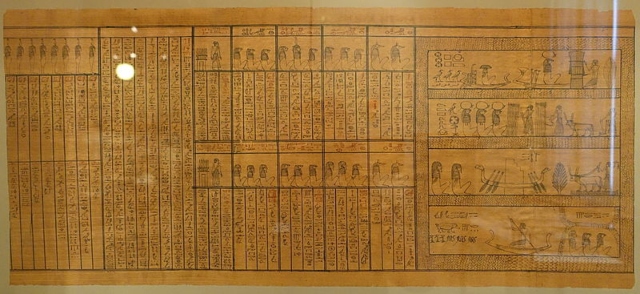[imagesurce:flickr]
Egyptian archaeologists recently found a lost 3,500-year-old cemetery containing mummies, statues, and the long-lost Book of the Dead.
The archaeologists found the book along with several jars holding the organs of the deceased at the New Kingdom cemetery in central Egypt. The cemetery dates back more than 3,500 years and features mummies, canopic jars, amulets, statues, and a papyrus scroll containing a portion of the Book of the Dead that measures more than 13 metres long.
This scroll is the first full papyrus discovered in the Al-Ghuraifa area, and it is “characterized by being in good condition,” according to Mustafa Waziri, secretary general of the Egyptian Supreme Council of Antiquities, in an Arabic statement translated by the Ministry of Tourism and Antiquities.
Archeologists were however mum on the details of the text, which is a good thing as the last thing the world needs now is text from the Book of the Dead floating around the internet.

“If it’s that long and well-preserved, then it’s certainly a great and interesting find,” Lara Weiss, CEO of the Roemer and Pelizaeus Museum in Germany, told Live Science. According to her colleagues at The University of Chicago, finding a copy in the grave it was originally buried in is “very rare”.
The book’s name may sound ominous, but the proper translation, “The Chapters/Book of Going Forth By Day”, gives it a bit more AVBOB-ish vibes at least. The text played a big role in ancient Egyptian culture. These examples of the text give researchers more insight into ancient Egyptian religion and their beliefs about an afterlife.
“The Book of the Dead reveals central aspects of the ancient Egyptians’ belief system and, like many topics in Egyptology, our theories are constantly changing, growing, and adapting with every new translation of this text.”
More than 25,000 ushabti sculptures, a huge amount of kitchenware, thousands of stone and wooden amulets, and canopic jars were discovered by the crew. Highlights of the collection were the engraved and coloured wooden coffins of Ta-de-Isa, daughter of Eret Haru, the high priest of Djehuti in Al-Ashmunin.
The text is expected to be displayed along with some of the other interesting finds at the Grand Egyptian Museum.
[source:livescience&popularmechanics]





